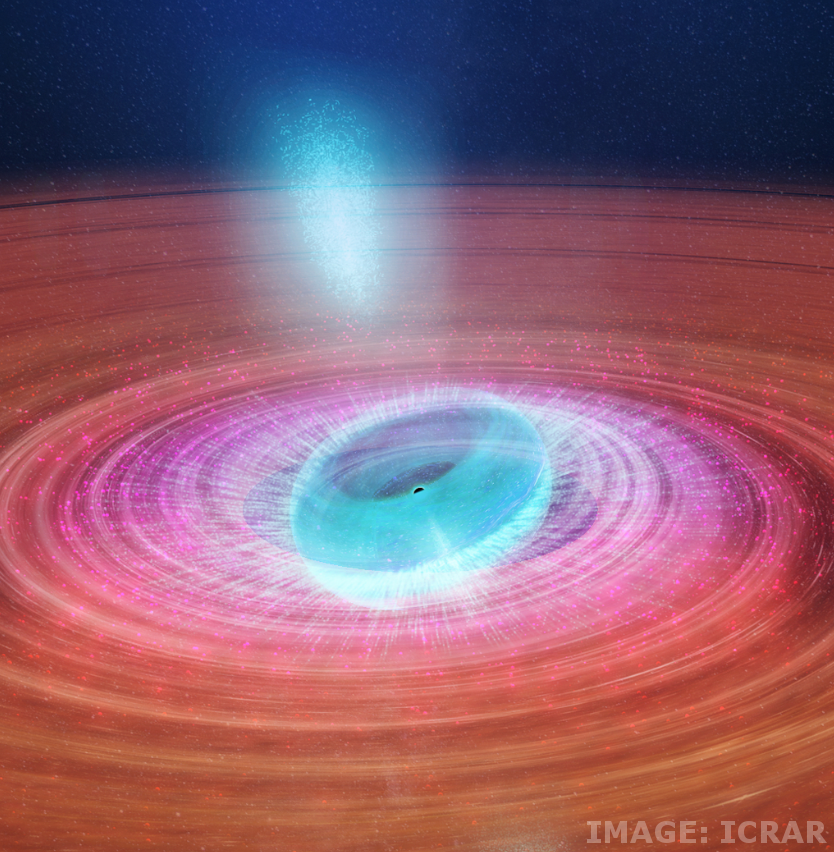Black hole jets inspected
 Australian astronomers have been awarded more than 20 million hours of supercomputing time to study the influence of supermassive black holes on their host galaxies.
Australian astronomers have been awarded more than 20 million hours of supercomputing time to study the influence of supermassive black holes on their host galaxies.
An expert team from WA, Tasmania and the UK have been awarded the time on Australia’s largest research supercomputing facility, the National Computational Infrastructure (NCI Australia) in Canberra.
They will use it to combine computer models of black holes—and the jets that shoot out of them—with large-scale cosmological simulations of the Universe.
Associate Professor Chris Power, from the University of Western Australia node of the International Centre for Radio Astronomy Research (ICRAR), is leading the research.
He said black holes can have a profound effect on how galaxies evolve.
“Black holes produce very powerful jets and winds,” he said.
“We know they can stop stars forming, and create the different kinds of galaxies we see in the Universe today.
“But the problem is that we have a very cartoonish understanding of how this process works.”
The researchers will use the supercomputer time to study how powerful jets from black holes impact their larger galactic and cosmic environments.
They will combine sophisticated cosmological simulations of galaxy formation, developed at ICRAR, with detailed models of black hole jets, developed by Dr Stanislav Shabala and PhD student Patrick Yates at the University of Tasmania.
The team also includes researchers from the University of Hertfordshire.
Associate Professor Power said running the simulations on a laptop computer would take almost 5,000 years.
“On the supercomputer, we’ll probably get results in a couple of days,” he said.
“So we want to be able to run hundreds of these kinds of simulations. We’re basically treating them as experiments.”
The astronomers will tweak their models with each simulation, improving our understanding of how black holes change their host galaxies.
“It's a bit like when we go into a lab and we're pouring combinations of chemicals into test tubes—we can see what kinds of things happen,” Associate Professor Power said.
The study will be one of the first to run on NCI’s brand new supercomputer Gadi, and will be undertaken over the next six to nine months.
It was one of four awarded time through the Australasian Leadership Computing Grants program, which attracts bids from researchers all over the country.
The other projects will conduct research in global climate modelling, decadal climate forecasts and combustion for low emissions gas turbines.








 Print
Print